The age diversity in the current workforce is the widest ever. It is now common for organizations to have employees working side-by-side with those that represent four to five generations. These generations are defined as the Silent Generation (1928-1945), Baby Boomers (1946-1964), Generation X (1965-1980), Generation Y (1981-1996), and Generation Z (1997-2012). Many employers have not placed a significant focus on taking advantage of this range of employees. HR leaders and management should consider all age groups during succession and strategic workforce planning to find the best ways to attract, engage, retain, and develop employees from various life stages.
Benefits with a Multi-Generational Workforce
One of the benefits of a multi-generational workforce is the multiple perspectives each individual brings to improve each other’s problem-solving abilities. Different generations can have distinctive ways of viewing job responsibilities. Sharing perspectives within and across teams brings a broad range of knowledge to support innovation. Combining multiple perspectives and diverse skills drives creative solutions to problems. Another benefit of a multi-generational workforce is the mentoring opportunities within employees. The more diverse a team is, the more ways people have to interact and learn from each other’s insights. Those with more years of experience can advise younger employees on career development. The roles can also reverse with cross-generational mentoring allowing more junior employees to educate mature workers with their familiarity with current trends and technology.
Challenges with a Multi-Generational Workforce
A challenge of a multi-generational workforce is negative stereotypes. As with any type of diversity, people have preconceived notions about those in a different age group. Older generations may assume that younger people are entitled or oversensitive. Younger generations may presume that those older than them are inflexible and afraid to embrace technology. These sweeping generalizations form negative stereotypes that might lead to toxic company culture. Another challenge management may face with a multi-generational workforce is employee expectations. People from different generations may not hold the same expectations for their employment. They may see their current employment for the long run or just a steppingstone for the next “big thing.”
Tips on Managing a Multi-Generational Workforce
Management is instrumental in ensuring the company bridges the generational gap and has efficient, cohesive teams. How do you overcome the multi-generational workforce challenges?
- Cater to Different Communication Styles
Language gaps have always existed between generations. Now that digital communication is changing the culture so rapidly, younger generations have much more influence. Workplace communication has become more about meeting in the middle to find common ground and blend the varied styles. Have consistency in company-wide communications and standards for your brand voice, but you can look for ways to facilitate different communication styles on a smaller scale. Offer leaders their choice of text-based or video communication methods based on their teams’ needs. - Combat Bias and Stereotypes
Generational bias and stereotypes do exist. It’s far better to reframe them than pretend they aren’t there. Acknowledging and contemplating differences allows you to harness the strengths of each generation. It might be necessary to conduct training to confront age-based stereotypes, such as role-playing exercises. Bringing inaccurate perceptions to the forefront makes people more aware of their assumptions and can lead to more harmonized multi-generational teamwork.
- Collect Feedback
Not everyone is comfortable giving unsolicited opinions, so you need ways to encourage honest feedback that reveals the pulse of your multi-generational workforce. Offer these opportunities through surveys, performance appraisals, one-on-ones, or other creative methods. You can discover what you need to improve to manage a multi-generational workforce better as you learn how engaged people feel and perform.
Discovering how to manage a multi-generational workforce certainly has its challenges, but it is also rewarding for your organization. Leveraging the age-related differences provides a talent pipeline to support business sustainability.

.png?width=500&height=500&name=Blue%20and%20White%20Classic%20Shield%20Financial%20with%20Star%20Logo%20Design%20(1).png)


